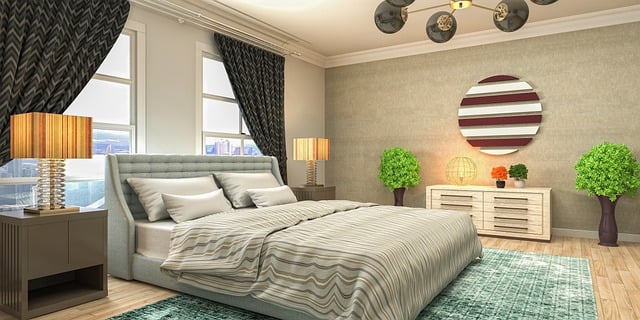CAD-based 3D rendering, leveraging advanced algorithms, is transforming visual content across architecture, automotive, medical, and gaming industries with photorealistic models mirroring real-world lighting and textures. This technology enhances communication, creativity, and design innovation, bridging digital and physical realms as continuous advancements open doors to immersive experiences.
In an era where visual communication holds paramount, photorealistic 3D rendering emerges as a transformative tool for immersive presentations. This cutting-edge technology seamlessly bridges the gap between digital and physical realities, redefining how we visualize and interact with designs across various sectors. By harnessing CAD-based 3D rendering, professionals can now create lifelike models and environments that captivate audiences and drive decision-making processes to new heights. Explore how this technology is revolutionizing industries in our comprehensive guide.
Unlocking Immersive Experiences: The Power of Photorealistic Rendering
Photorealistic 3D rendering, a cutting-edge technology in CAD-based visualization, is transforming the way we experience digital content. By creating visuals that closely mimic real-world scenes, it offers an immersive and captivating journey for users. This advanced technique utilizes complex algorithms to replicate lighting, textures, and shadows, resulting in stunningly realistic images and animations.
With its ability to present 3D models as if they were tangible, photorealistic rendering empowers various industries. From architecture and urban planning to gaming and film, professionals can now showcase their designs and concepts with unprecedented lifelike quality. This level of realism not only enhances communication but also paves the way for more creative and innovative solutions, making it an indispensable tool in modern design practices.
CAD-based 3D Rendering: A Game-Changer for Visualizations
In the realm of visual presentations, CAD-based 3D rendering has emerged as a game-changer, revolutionizing how we create and experience immersive content. This advanced technique leverages the power of Computer-Aided Design (CAD) software to produce photorealistic 3D models that closely mimic real-world objects and environments. By combining intricate geometric details with sophisticated lighting and material simulations, CAD-based rendering delivers visuals that blur the line between digital and physical realities.
This technology finds its significance across various sectors, from architecture and engineering to product design and entertainment. It enables professionals to showcase complex designs more effectively, facilitating better decision-making and client communication. With its ability to render intricate details accurately and efficiently, CAD-based 3D rendering is not just a tool; it’s a catalyst for innovation, driving the creation of stunning visual experiences that captivate and inspire.
Technical Aspects: From Concepts to Lifelike Images
The journey from concept to photorealistic image in CAD-based 3D rendering involves a complex interplay of algorithms and artistic vision. This process transforms two-dimensional design ideas into three-dimensional models, which are then rendered with unparalleled lifelike detail. Advanced techniques like ray tracing and global illumination simulate light behavior, resulting in accurate reflections, refractions, and shadows that mimic real-world physics. Artists and designers leverage these tools to create hyperrealistic visuals, ensuring their creations not only look realistic but also convey the intended emotional impact.
Through meticulous attention to textures, materials, and lighting, CAD software bridges the gap between digital models and tangible objects. This level of realism is particularly crucial in industries such as architecture, automotive design, and film, where precise visual representations are essential for communication and planning. With continuous advancements in rendering technology, the line between virtual and physical continues to blur, opening up new possibilities for immersive experiences across various sectors.
Applications: Revolutionizing Industries with Realistic Presentations
Photorealistic 3D rendering is transforming industries by providing immersive, lifelike visual presentations that were once thought impossible. From architecture to automotive design, medical visualization to film and gaming, CAD-based 3D rendering offers a new level of detail and accuracy that enhances decision-making and communication. It enables designers, engineers, and clients to see and understand complex designs as never before, fostering innovation and streamlining workflows.
In architecture, for instance, photorealistic renderings allow architects to showcase their designs with breathtaking realism, helping clients envision the final product more clearly. In automotive, these rendering technologies accelerate concept development by enabling designers to quickly create and iterate on hyper-realistic models. Medical professionals likewise benefit from precise visualizations of surgical procedures or complex anatomies, improving treatment planning and patient communication. The applications are vast, and as technology continues to advance, photorealistic 3D rendering will undoubtedly continue to revolutionize industries across the board.
Photorealistic 3D rendering, powered by innovative techniques like CAD-based visualization, has transformed the way we present and interact with digital content. By bridging the gap between reality and simulation, this technology offers immersive experiences across various industries. As technical advancements continue to refine the process, the future looks bright for even more lifelike and impactful visual presentations, revolutionizing how we design, communicate, and explore our world both virtually and in real life.
